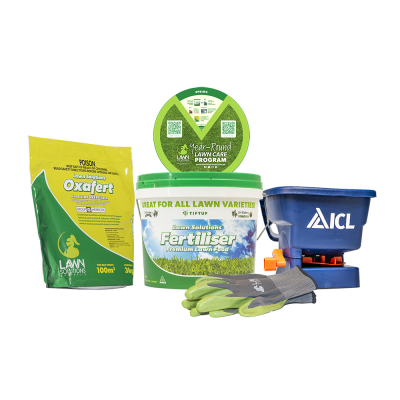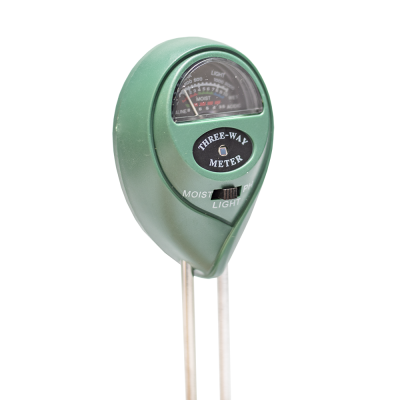Charlie Albone shares his tips for creating a garden that can handle the harsh Australian summer.
Surviving the Australian summer can be difficult with the highest temperatures we experience all year, so how do you keep gardening and what can you do to help your plants through this testing season?
Summer Gardening
You can start by helping your plants out by improving the soil so it can hold onto moisture and nutrients for longer by adding some compost, mushroom compost or cow manure. Dig this through where possible but in established beds you can use it as a mulch and let the worms do the hard work for you whilst protecting the roots of the plant stock.
Adding a granulated soil wetter to the mix and to all garden beds will ensure any rain or irrigation gets into the soil effectively to maximise uptake to the plants. Your soil may not be hydrophobic, but the addition of a soil wetter can prevent build-up of bad bacteria and is a good gardening practice.
Water in your soil wetter wisely, obviously you don’t want to be out in the heat of the day as you’ll lose excess moisture through evaporation, but early morning or evening is best and lock it all into the soil with 75mm of mulch.
Summer Lawns
When it comes to preparing your lawn for the hot summer it’s a good idea to aerate to ensure water gets down to the roots, you can fill the core holes with a washed coarse sand to combat excessive water loss through the holes. Laying out on the lawn is a must do summer activity but try to avoid excessive compaction as this can stress the plants roots out and poor roots turns into poor leaf growth and health. You should also be mowing more often, removing less leaf with each cut means less stress to the plant as a whole and a healthier stronger lawn.
Sun and Shade
For planting, picking the right plant for the right spot is vital at any time of the year but when you put something in the ground in summer you really need to make sure it gets the right amount of sun or shade, protection from wind or salty air, and the right amount of soil moisture. There is little room for error when it comes to getting the right amount of sun so also check your new plant hasn’t been raised in a shade house, as even if it’s a sun hardy variety the sudden shock of being put in direct light might tip it in the wrong direction.
Lawn Selection
The same applies to selecting a lawn species – if you want a drought and heat tolerant species you can’t go past TifTuf Hybrid Bermuda. Slow growing varieties such as Sir Grange Zoysia will take longer to establish so installing during the warmer months is ideal, but wait until the weather isn’t scorching hot so you’re not using too much water for establishment.
Creating shade in the garden can lower the temperature drastically, I know it’s considerably cooler under my wisteria covered pergola in the middle of the day! I like deciduous plants to cover structures as they let in the winter light as well as protect through summer. If you are adding a solid roof for all weather protection, it’s a good idea to insulate the roof for maximum effect.
Protecting sensitive plants with shade cloth in February helps them through too, for individual plants you can use stakes or star pickets to create a frame that can be removed once the heat has passed. For your veggies flexible plastic stakes can create a tunnel for plastic in the cooler months for heat or shade cloth for cooling in months like February. If you have a greenhouse it can be transformed into a shade house by removing the roof and replacing it with shade cloth.
Planting Vegetables
You can use this heat to get a jump start on your autumn seedlings for the veggie patch such as Romanesco broccoli and Cauliflowers. Winter vegetables are much slower growing than the veggies you have in at the moment as when the temperature does cool the growth slows right down with it, so why not get a jump start? Using the heat in one of your mini shade tunnels will also help germinate seeds that normally take time to show life such as carrots, leeks and beetroots. I would do this at the end of February and sow them at one-week intervals so when they are ready for harvest, you’ll have a longer cropping period rather than all at once.
We all know the shade of a large tree helps to cool its surroundings but make sure you plan for future growth, you don’t want a tree to get too big and shade out your lawn area in a few years so select wisely – again the right plant for the right spot!
Creating microclimates in your garden is a great way to manage heat as well, by grouping all your pots together in one area and placing them on trays to hold some moisture you’ll create a cooling effect surrounding the plants.


